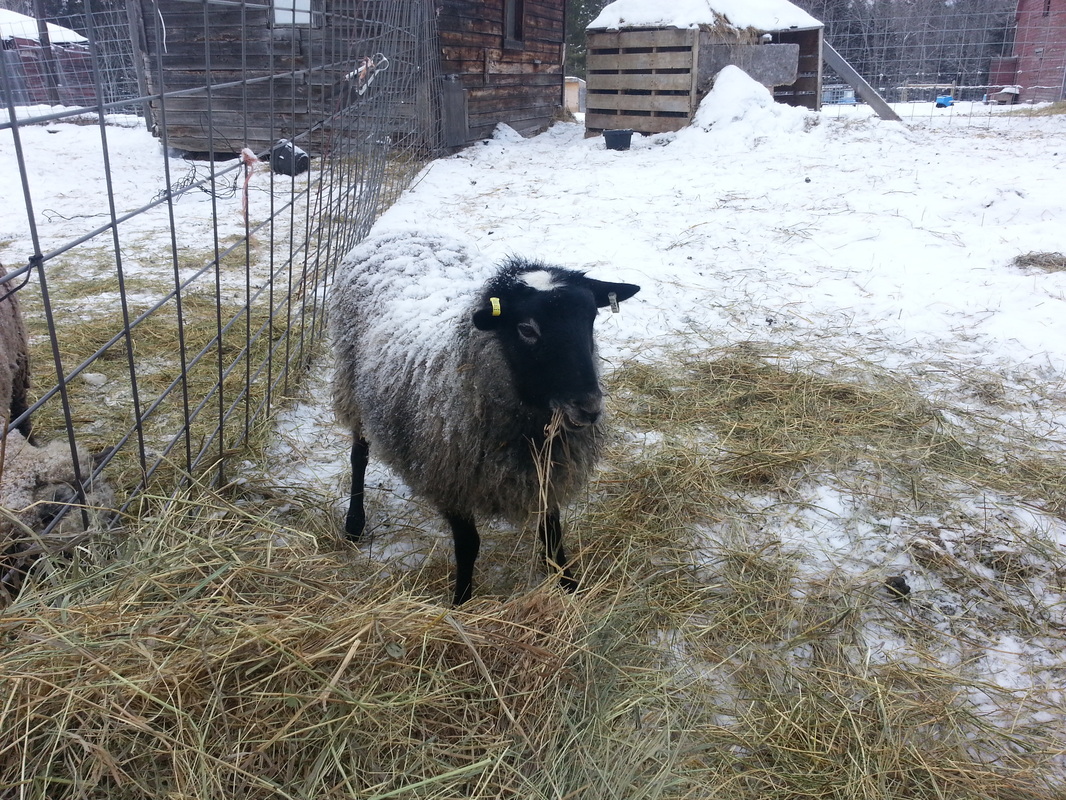Romanov sheep are an ancient Russian breed, but are new to Canada, only having been brought to Canada in 1980. They are a smaller framed sheep with delicate, but very strong legs and smaller bones. They have been unimproved, thank goodness, which means so far, man has not intervened to make them bigger or better. The feature quality of a Romanov is that they have multiple births and are most often able to feed all of their lambs wihtout assistance. It is not uncommon for a prolific ewe to consistently have four lambs and even up to five. The most common is triplets , followed by twins, and singles are rare, even for a first time mom. They are very milky and are able to nurse their lambs to weaning. Occasionally if the feed quality is substandard the ewes may have to have help with supplemental feedings, but with good feed and care, they do well on their own. They also lamb with ease, even standing up and continuing eating all the while. They clean their lambs quickly and have them up nursing before the next is born.
The colour of the Romanov lambs is black and as their fleece grows, it becomes light grey. The head and legs remain black and the eye rings are black. Most usually, a white tuft sits atop the head or nose. The colour never varies. The wool is dual coated much like the Icelandic sheep, however; it is coarser. The hair is easy to remove since it is thick and dark, leaving the shorter undercoat of wool. The Romanov will shed its fleece if it is not sheared and can be rued, as the more pure Icelandics can. Ruing is the separation of new fleece growth in early summer and by combing the flleece with the hands and gently working it away from the new growth, the animal can be hand shorn. Romanov sheep fleece is best for heavy wear, horse blankets, carpets and felted outer garments.
The Romanov sheep have small short tails, or rat tails, and do not need to have their tails docked. They have lost favour in the market because of their smaller size. Buyers want bigger lambs, upwards of 90 pounds and although the rams can grow to a fair size, but not usually larger than 75 pounds. They do have a lean carcass and more meat to bone ratio than the large boned sheep. Still, North American producers are looking for a larger lamb, but they do use some genetics from the Romanov to increase fertility and lambing rates and to import hardiness.
Tatiana is the only Romanov sheep at The Fat Ewe Farm thus far and since her fleece is not a high quality sought after type, she likely will always be the only one. This year she will be bred by the Babydoll ram. Babydolls have a stocky meaty carcass and are large boned and have a fine short wool excellent for hand spinning and next to skin garments. It will be interesting to see what the cross of the two turns out to be. Whatever pops out, I am quite sure cuteness will be the number one factor!


 RSS Feed
RSS Feed